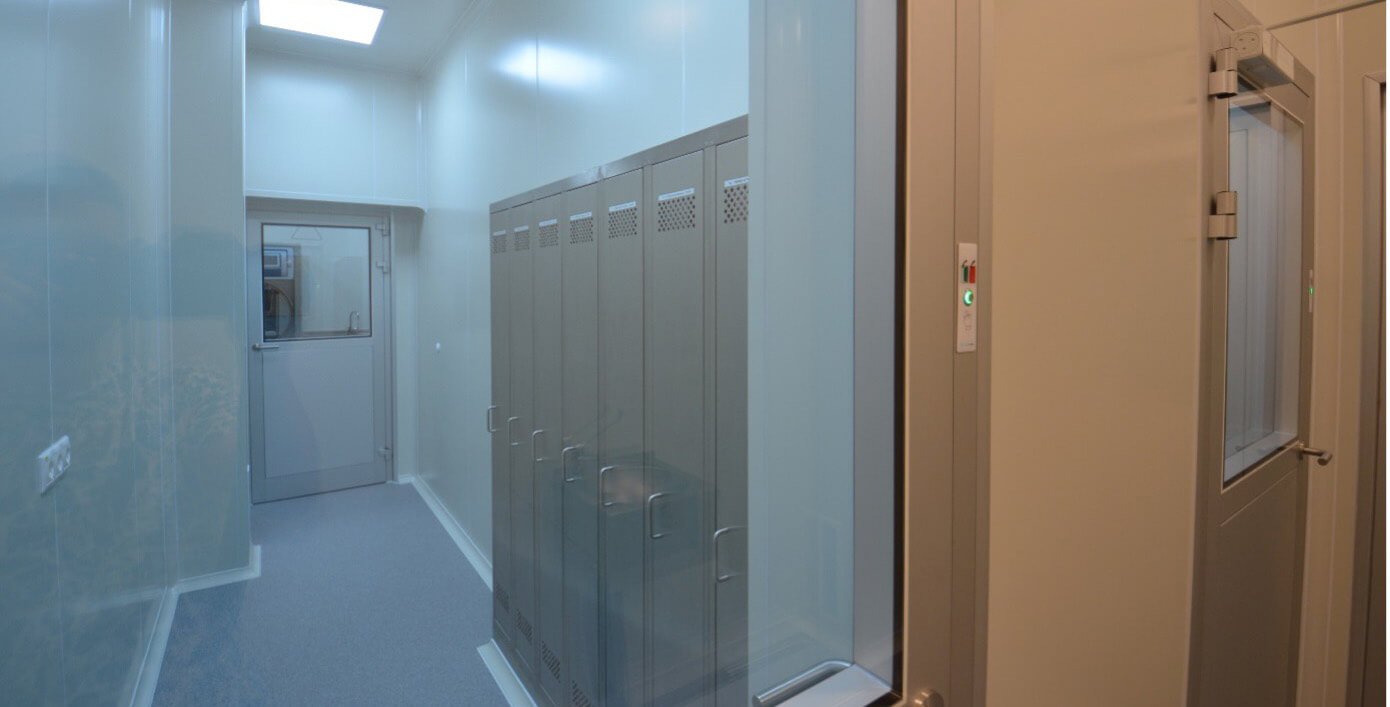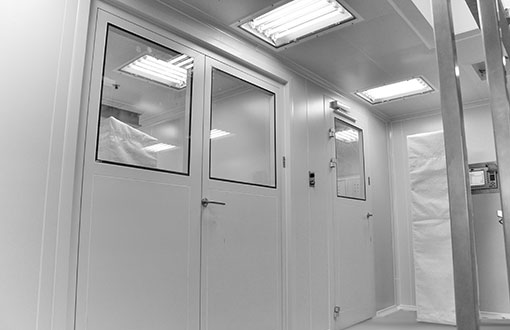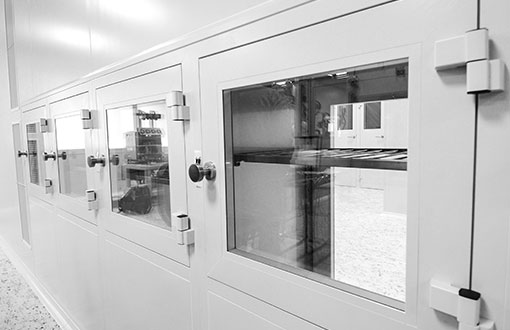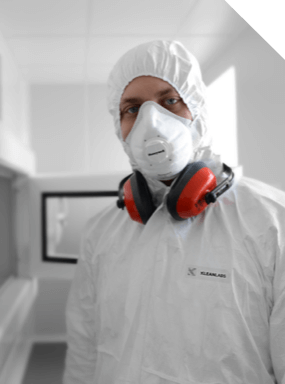Construction of a cleanroom is not only extremely investment intensive, but depending on the number of required air exchanges and filtration efficiency, operation can be extremely costly, as appropriate air quality can only be maintained with constant operation. Not to mention energy-efficient operation and continuous adherence to cleanroom standards that make a cleanroom one of the most important infrastructures for manufacturing technology and laboratories.
In 2020, one of our partners approached the company with the request of creating several ISO7 and ISO8 clean rooms within an existing building that comply with ISO-14644. We have been entrusted with both complete design and installation of the project.
Design and preparation phase
Since our company specializes in custom-built clean rooms for various industrial needs, we gladly accepted the challenge with the hope of being able to provide a simple, cost-effective solution that can even exceed expectations. During the design phase, we created detailed sketches of the clean space that were to include the following rooms:
List of clean rooms
Room type | ISO class | Air exchange | Pressure |
Lobby | NC room with clean air without qualification | ||
Changing room #1 | ISO 8 | 15x | 0+20Pa |
Changing room #2 | ISO 8 | 15x | 0+20Pa |
Laboratory #1 | ISO 7 | 20x | 0+35Pa |
Laboratory #2 | ISO 7 | 30x | 0+45Pa |
Laboratory #3 | ISO 7 | 30x | 0+45Pa |
Humidity control was not a requirement for this project.
Standard scenario: Design with central air handling
At first, we drafted a traditional clean room with central air handling and made calculations for the entire installation. In addition to the design and installation of the cleanroom rooms, the initial offer and the preliminary plans included a central air handling unit with 15-20% than required higher air supply. The original plans have been made in accordance with laminar flow rules with supply and exhaust manifolds and integrated H14 HEPA filters. The central cooling system would have included a chiller. Heat energy was to be provided by free capacity available in the house through a heat exchanger.
The total clean space to be constructed made up about 50 m2, which essentially meant several small clean rooms.
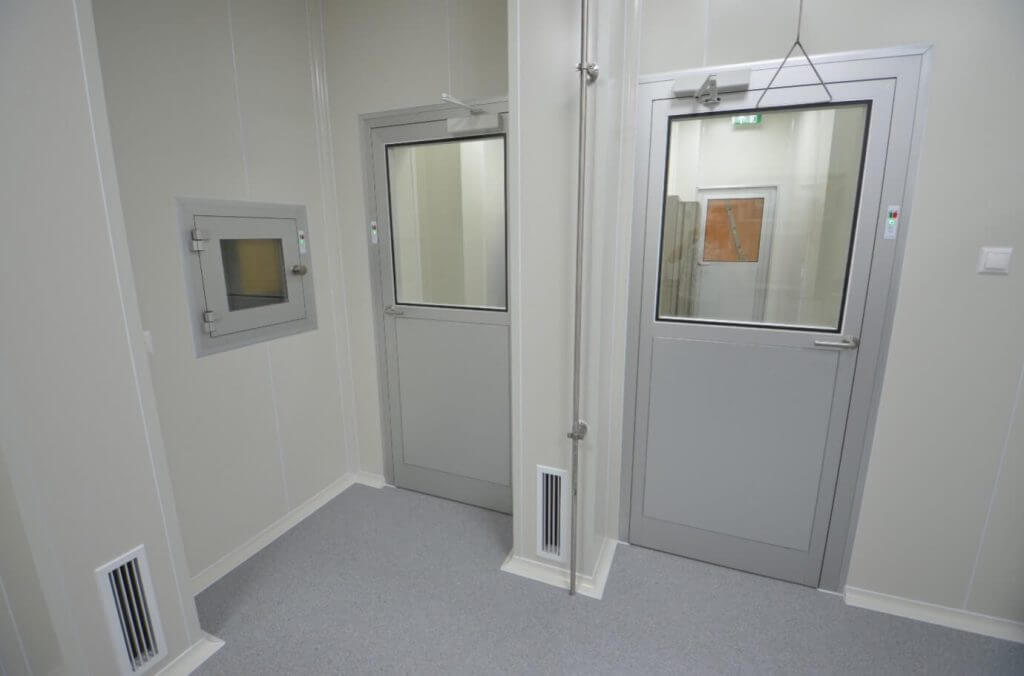
With central air handling, the “cleanest” air is delivered to each clean room, regardless of different cleanliness requirements, resulting in significant energy waste
Construction costs when designed with central air handling
Typical investment cost for complete cleanrooms varies between 1.500 and 6.000 EUR / m2, depending on:
- required level of cleanliness of the clean room,
- technology used,
- size of the rooms,
- division of the clean space,
- availability of hot and cold energy capacity in the building for air conditioning and heating.
It’s important to note that in order to filter and exchange the air properly, much higher power requirements are needed than for instance in a common office environment. Not to mention that hermetically sealed clean rooms also require fresh air supply.
In this case, the clean space was strongly divided on a very small floor area, where several smaller rooms (Laboratory #1, Laboratory #2, Laboratory #3) had an ISO7 cleanliness requirement, resulting in a significant increase in initial investment cost. Understandably, the high investment cost also shook the investor, as the budget for this project was limited.
Redesign with a cost-effective FFU solution
At the request of the investor, we started exploring cost reduction options. The layout of the clean room as well as the number of doors and windows were given, no extra savings could be achieved here. In contrast, redesigning the air supply system seemed an obvious solution.
Therefore, ceilings of the rooms were redesigned as duplicates, the volume of required plenum was calculated and compared with the height of the available room. Fortunately, there was enough space to increase the height. The idea was to place air handling into the plenum above the ceiling, and from there supply clean air to the clean rooms via HEPA filters with the help of an FFU system (fan filter units). Return air is recirculated with the help of gravity through air ducts on sidewalls, which are mounted into the walls, so that no space is lost.

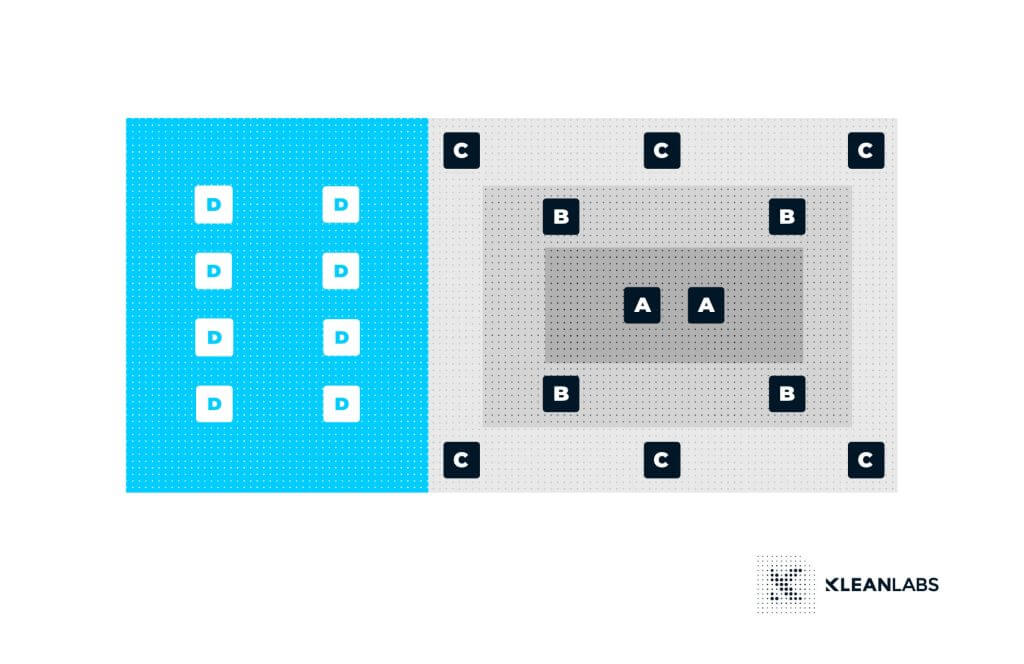
Unlike central air handling, FFUs allow air to flow into each zone to meet the requirements of that specific zone
During redesign, we included a direct evaporative air conditioning system in the plenum with adequate capacity, which can both heat and cool the space. FFUs have been arranged to provide optimal air flow within the space.
Cost savings achieved
The redesign resulted in significant savings as the new design allowed for the exclusion of several costly elements such as
- the external air handling unit,
- the chiller,
- complete duct system with control elements,
- motorized valves,
- heat exchangers, etc.
The new design consists of a very simple system that not only significantly reduces investment costs, but also leads to lower operating costs than a central air handling system.
In contrast to the original design, the redesigned system fit into the investor’s budget, so we contracted for the project.
The results - Performance of the FFU system
Construction, including the installation of each system, was on schedule. As the project has been executed entirely by our company, no obstacles arose from the coordination of complex processes.
The construction was followed by cleaning and disinfection of the clean room, and then we started the standard inspection process of clean room performance with an accredited third party. During the qualification process, the following measurements have been conducted:
- time of air purification,
- number of particles in the air,
- integrity of filters,
- number of air exchanges and
- pressure values.
All measured data showed excellent, complying results.
Room type | ISO class | Expected air exchange rate + overpressure | Achieved air exchange rate + overpressure |
Lobby | NC room with clean air without qualification | ||
Changing room #1 | ISO 8 | 15x | 40x |
Changing room #2 | ISO 8 | 15x | 40x |
Laboratory #1 | ISO 7 | 20x | 40x |
Laboratory #2 | ISO 7 | 30x | 81x |
Laboratory #3 | ISO 7 | 30x | 81x 0+56Pa |
According to our measurements, the ISO8 clean room showed a performance similar to that of ISO7 and ISO6 clean rooms in its as-built state. Whereas the particle numbers of the ISO7-qualified rooms correspond to ISO6 and ISO5 levels, measured by an independent third party.
Conclusion
In the light of the achieved results, it can be stated that clean room implementations with FFU systems complying with ISO-14644 or GMP standards can result in significant cost reduction. Cost advantage can be achieved regarding both the investment and operating costs. The FFU system can also be controlled remotely, thus, if necessary, the clean room can be placed at rest during the out-of-shift periods.

